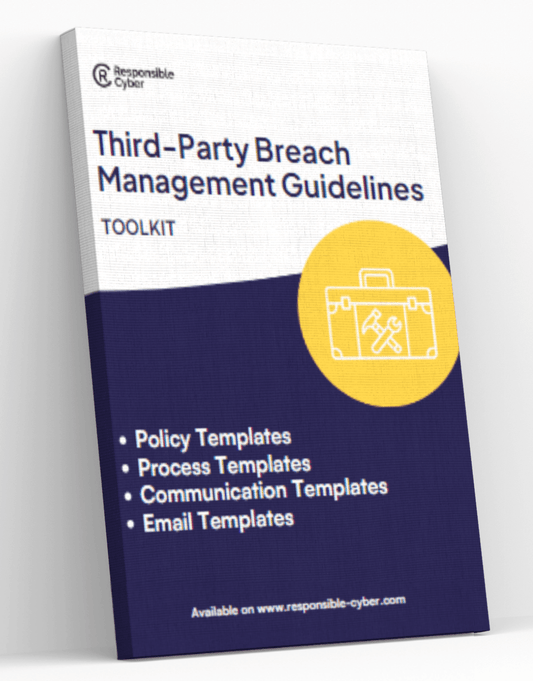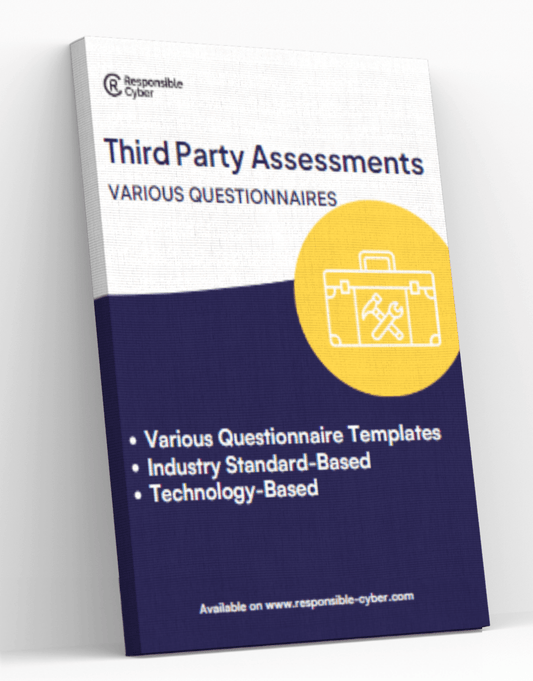Third-Party Risk Management Policy

Third-Party Risk Management Policy
The below is an example of Third-Party Risk Management Policy
Purpose: We engage with a variety of external entities such as vendors, suppliers, contractors, partners, software providers, and open-source projects to enhance our business operations. Given the risks posed by these third-party relationships, it is crucial to manage and mitigate potential disruptions that could affect our operational capabilities and business objectives. This policy establishes a comprehensive Third-Party Risk Management (TPRM) program tailored to assess, respond to, monitor, and manage the risks associated with third-party interactions.
Organizational Roles and Responsibilities
- Chief Information Security Officer (CISO): Provides leadership and strategic direction for the TPRM policy, ensuring alignment with our security and business goals.
- TPRM Team: Develops and updates the TPRM policy and procedures, oversees risk management tasks, and serves as the central communication hub for third-party risk issues.
- TPRM Lead: Manages daily operations of third-party risk assessments and monitoring, ensuring compliance with this policy.
- Department Heads: Ensure their departments comply with the TPRM policy during all stages of third-party engagements.
Oversight and Coordination
The TPRM Committee, led by the CISO and comprising TPRM Leads and Department Heads, meets quarterly to review third-party risk exposures and adjust strategies as necessary. Regular reporting to executive management ensures timely decision-making.
Risk Tolerance and Minimum Security Requirements
We define acceptable risk levels based on the criticality of services provided by third parties and the potential impact on our business. Vendors must meet minimum security requirements, which are continuously monitored and enforced.
Vendor Risk Management Tools
Our organization utilizes various tools provided by RiskImmune to manage third-party risks effectively. These tools include:
- Security Rating Services: To pre-screen and monitor vendors, ensuring compliance with our security standards.
- Risk Assessment Tools: For initial and periodic evaluations of vendor risks.
- Compliance Tracking Tools: To ensure ongoing adherence to regulations like GDPR, HIPAA, and SOC 2.
- Contract Management Systems: For managing and monitoring contractual compliance with third-party engagements.
Vendor Onboarding and Monitoring
The vendor onboarding process includes comprehensive due diligence, risk assessment, and the integration of new vendors into our systems. Ongoing monitoring involves regular reviews of vendor performance, security, and compliance to ensure they meet our standards consistently.
Vendor Contract Termination
Procedures for vendor contract termination are clearly defined, including grounds for termination such as non-compliance, breach of contract, or operational failures. Documentation and legal considerations are meticulously handled to protect both parties and ensure compliance with applicable laws.
RiskImmune Features
RiskImmune offers a comprehensive suite of tools for efficient TPRM, including:
- Third-Party Attack Surface Monitoring: Identifies and mitigates vulnerabilities in vendor systems.
- Managed Vendor Assessments: Streamlines the assessment process, enhancing efficiency and compliance.
- Security Questionnaire Automation: Facilitates the collection and analysis of vendor security information.
- Risk Remediation Workflows: Helps manage and mitigate cybersecurity risks effectively.
- Regulatory Compliance Tracking: Ensures vendors consistently meet regulatory standards.
- Vendor Security Posture Tracking: Provides dynamic assessments of vendor security measures.
- Cybersecurity Reporting Workflows: Offers tailored reports for various stakeholders.







